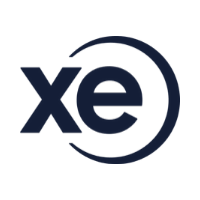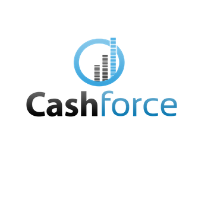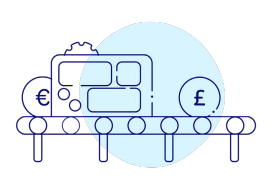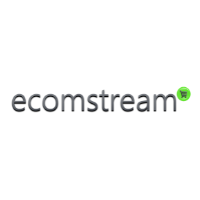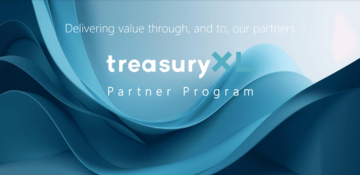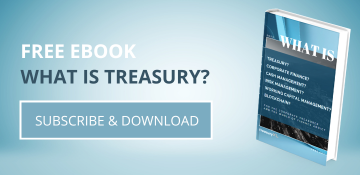| 29-09-2021 | treasuryXL | Nomentia |
A recent Cash management survey that we did showed that 43 percent of respondents continue to experience issues with their Cash flow forecasting. Unsurprisingly, more than half of the market still use spreadsheets to execute this business-critical function. The million-dollar question is, why?
According to the European Spreadsheet Risks Interest Group, the reliability of a spreadsheet is essentially the accuracy of the data that it produces and is compromised by the errors found in approximately 94% of spreadsheets.
If accurate cash flow forecasting remains one of the key priorities for treasury and finance professionals alike and the market has easy access to affordable, cutting edge forecasting applications, why do we continue to rely on outdated, ineffective forecasting tools?
Common myths prevail that spreadsheets save money, are easy to use & flexible. In the spreadsheet’s defence, it’s a nifty tool, that ticks many of the aforementioned boxes and can work very well with cash forecasting solutions. But, for a growing business looking to mitigate risk and plan for the future, risks run high if you’re relying on a system that’s almost surely flawed, demands hours of manual input effort, prone to human error, exists largely undocumented and which no one really knows how it works.
“After the clever intern, who developed the nifty macros and formulas is no longer around……nobody knows how the application generates the numbers.”
Penny wise, pound foolish
Spreadsheeting is, by and large, the manual process of gathering, inputting and administrating data. Typically, spreadsheets have been built up and added to over a period of years, becoming cumbersome to manage and share. In an eye-watering number of cases, the person originally responsible for constructing the spreadsheet has long since left the department. No one knows the algorithm behind the macros and no one assumes responsibility for its maintenance, let alone documenting changes and adaptations. The whispered precedent remains, “if it’s not broken, then leave it alone”……… Ouch!
Alternatives are perceived to be more expensive. Excel, for example, is cheap to acquire whilst Treasury Management Systems are expensive with lots of added features that SME’s in particular, don’t require.
Busting the myths
Cost is no longer a plausible reason to rely on spreadsheets for cash flow forecasting. Cloud-based solutions such as Nomentia Cash Forecasting, offer competitive pricing. Modular, on-demand, SaaS solutions have revolutionised application choice. Simply choose the modules you need, pay by the month and no IT involvement required. Free up more departmental time by reducing the number of resource hours required to maintain a spreadsheeting process and the cost-saving just got bigger.
Spreadsheet errors and inaccuracy are by far the most compelling reasons to consider a move to a specialist cash forecasting application. Finance and treasury cannot afford to make mistakes. Inaccurate cash flow forecasts can literally lay to ruin to a company’s business reputation and/or result in a financial loss or penalty. No scare tactics needed.
Mini Case-Study: Conviviality a ‘Spreadsheeting Horror Story’
(Source: The Guardian UK, 21 March 2018)
At first, the drinks retailer Conviviality said profits would be 20% lower than the £70m expected by the City, with £5.2m of the £14m hole that had opened up in its forecast, down to a spreadsheet error. The remainder was a reflection of weakening profit margins.
On 21 March 2018, the Guardian (UK) reported “Firm issues third profits warning; says it will meet investors to raise funds via a share placing’’. The company, in a stock exchange announcement, said it was holding meetings with investors to raise £125m via a share placing that would help it pay a £30m tax bill due at the end of the month, fund overdue payments to creditors and repay a £30m loan.
The company blamed the first shock profit warning on a spreadsheet arithmetic error made by a member of its finance team and weakening profit margins, and then admitted it had not budgeted for the £30m tax bill due this month.”
Conviviality has since gone into administration
Whether or not the use of spreadsheets was the sole cause of this bankruptcy is not clear, but it seems to have been a major contributor. Such cases are exceptional, but they do illustrate how relying on spreadsheets is not a sensible course of action for any finance & treasury team anywhere.
Many spreadsheets also contain, quite clever but complex, macros and apart from keeping these up to date, finance & treasury is responsible for ensuring their integrity. This is something that is not always feasible. Even when errors are spotted it is often very difficult to decode them, especially given the sheer size of the spreadsheets many finance and treasury folk utilise.
Embracing future-proof change
Readily available and affordable cash forecasting applications have, for those organisations who have embraced the benefits of technology, reduced risk exposure exponentially, facilitated real-time & accurate cash visibility, minimised human resource demand, and liberated finance leaders to take a more strategic role across the business. No-brainer.
Sometimes taking a leap of faith, moving away from the old and onto the new, can be a daunting decision. Historical hang-ups, ranging from less than favourable experiences with legacy systems, pre-conceived assumptions around cost implications, and work-flow disruption make it all too easy to decide to ‘leave well enough alone’. Before you take the decision to stick with the spreadsheet that’s done what it apparently ‘says on the tin’ for many years – let’s consider the following:
Back to the future
In a world where cyber security is of the utmost concern and data privacy, e.g., GDPR, is a regulatory requirement, can finance and treasury really afford to run their operations on spreadsheets? Spreadsheet security cannot and does not compare to the advantages of specialist systems that have been built with security in mind. Indeed, some spreadsheet applications lack even basic authentication security, can be easily copied and distributed outside the confines of the business without the knowledge or prior agreement of management.
Spreadsheets were built for convenience-only in a pre-internet world where cyber-attacks and data security were unknown and of no consideration. Spreadsheets were not built with security in mind.
Square peg in a round hole
Spreadsheets don’t grow with your treasury and finance needs. Organisations often try to adapt their spreadsheets to a growing business but soon realise that the complexity of doing so is almost impossible. Adding new accounts and deleting old accounts becomes challenging at the best of times, but managing this critical process in a spreadsheet, whilst trying to drive the business forward, is often a step too far, leading to errors and oversights.
Treasury and finance, by its very nature, consists of a number of different individuals performing a variety of activities, sometimes at the same time. This results in the sharing of valuable company information between several people and departments in any one day. Managing this process on spreadsheets can be difficult and nigh on impossible, even if some automation is achieved. Typically, only one person can update a spreadsheet at any one time so the workload that needs to be shared becomes inefficient and confusing. Maintaining full transparency around additions, edits, and alterations are off the table. Once an edit, or error, is made on the spreadsheet, it remains invisible and untraceable until something goes wrong. In addition, identifying the point of error-impact is often a time-consuming, futile, and frustrating exercise for some unfortunate departmental executive, even if they have the necessary investigative skills.
Doomed to repeat the same mistakes
Spreadsheets are not that good at quantifying or qualifying historical data, and treasury & finance needs this data regularly. That is not to say data cannot be stored in earlier spreadsheet versions, but due to the way they work, it is not a simple task to access, view, assess, and report this data as efficiently and effectively as modern cash management applications. Losing valuable historical data for comparison and variance purposes is a high-risk consideration. Accidentally saving over historic files, or indeed losing files altogether, is a terrifying experience we’ve probably all experienced at some stage in our careers. Notifying management of a spreadsheet faux pas is just as bone-chilling, remaining undisclosed and causing further inaccuracy to forecast outputs.
As alluded to in an earlier blog ‘Five expensive myths in Cash Forecasting’, there is a very real chance that the person who created the original spreadsheet has moved on and left the company. How many finance and treasury departments have found themselves in a position where a mega spreadsheet, long lauded as a ‘work of art,’ is no longer sufficiently supported and documented with non-existent instructions on how to maintain or update the worksheet.
Cassette recorders, big hair, leg warmers, the Rubik’s cube, Walkman, and mobile phones the size of small suitcases are all legacies from the 1980’s. Technology and hairstyles have moved on….. so should cash forecasting applications.



.png?width=176&name=Francois%20de%20Witte%20(1).png)




